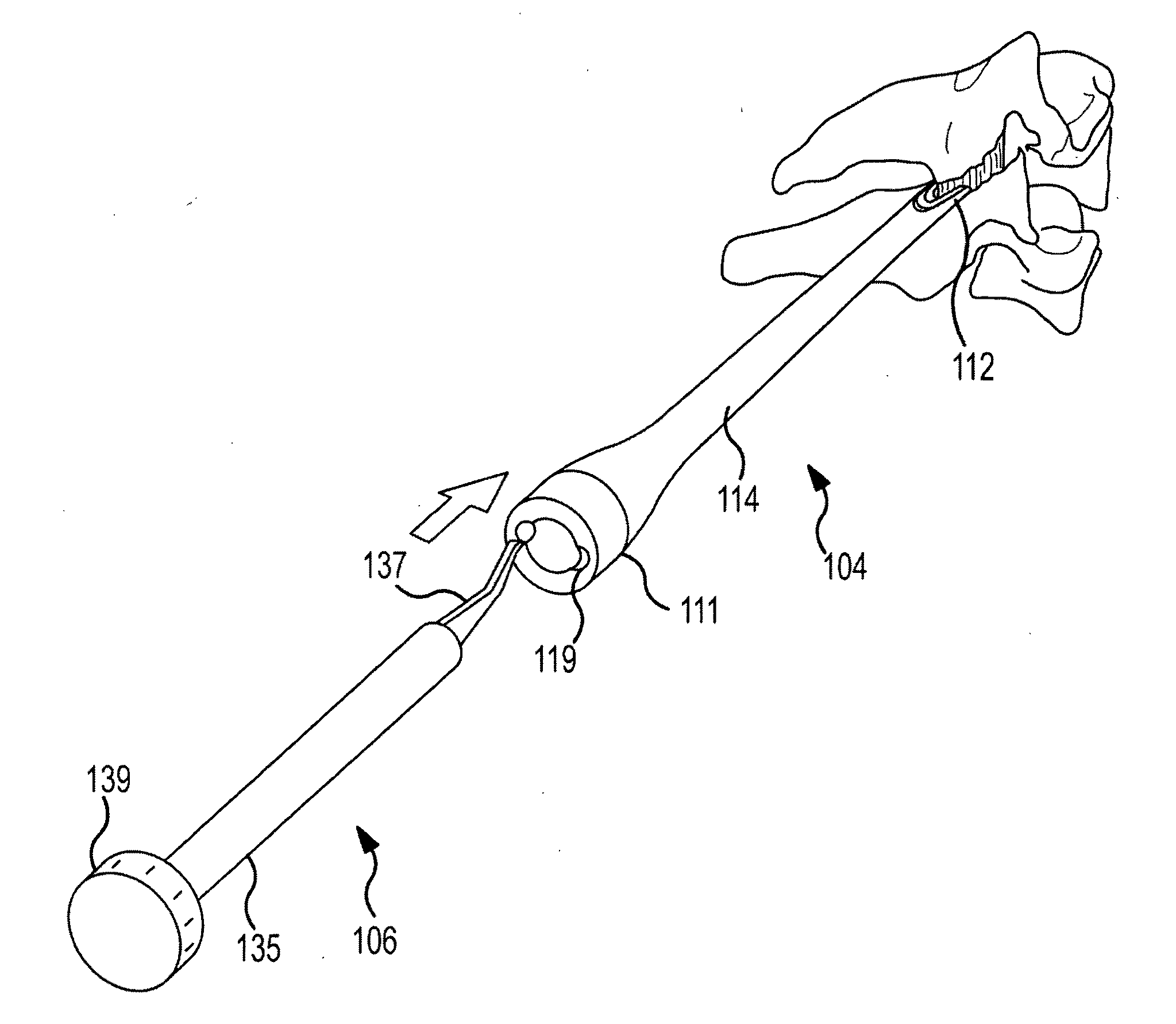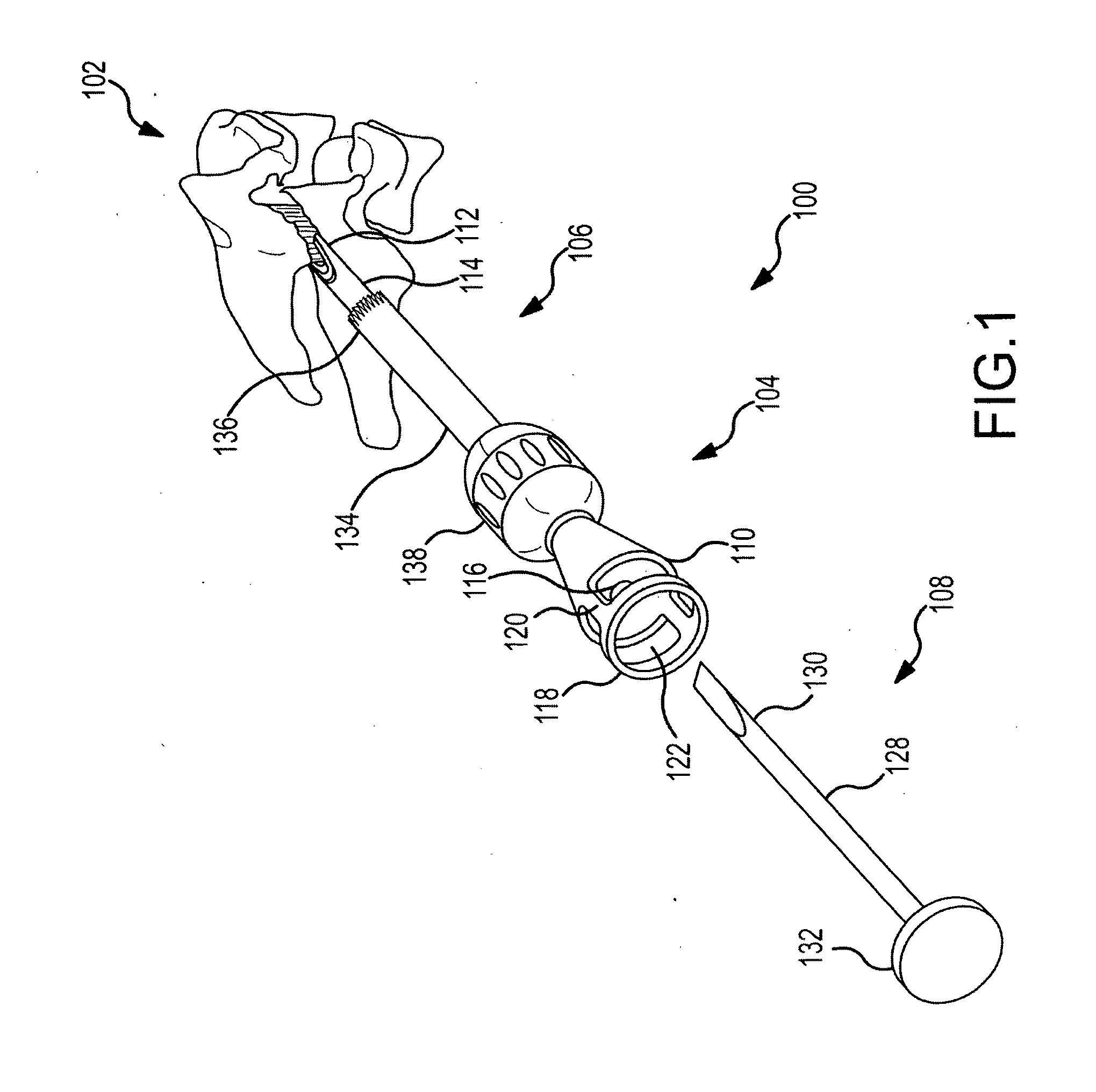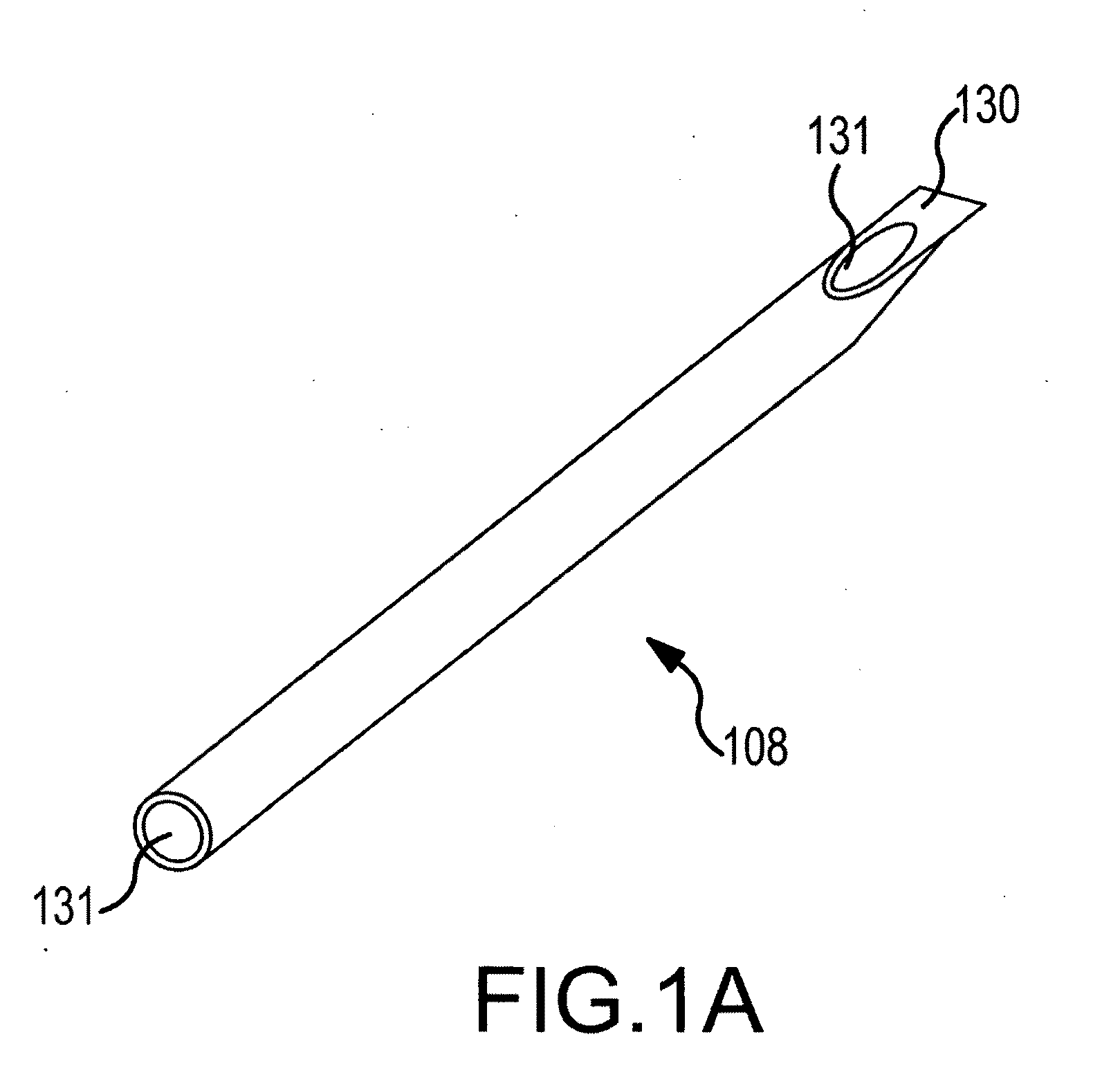Vertebral joint implants and delivery tools
a technology for vertebral joints and implants, applied in the direction of prosthesis, osteosynthesis devices, surgical staples, etc., can solve the problems of radicular pain, high surgery cost, pain and disability of a large segment of the population, and achieve the effect of preventing relative movement along the plan
- Summary
- Abstract
- Description
- Claims
- Application Information
AI Technical Summary
Benefits of technology
Problems solved by technology
Method used
Image
Examples
first embodiment
[0237]Referring now to FIGS. 1-28, a tool and an implant is shown. FIG. 1 shows the tool 100 in position posterior to the spine 102. The tool 100 includes a delivery device 104, a decorticator 106, and a chisel 108.
[0238]The delivery device 104 may include a receiving assembly 110 at a proximal end, anchoring forks 112 at a distal end, and a generally tubular shaft 114 defining a longitudinal axis and extending between the receiving assembly 110 and the anchoring forks 112. The tubular shaft 114 may have an annular shaped cross-section with an inner radius and an outer radius, where the difference between the two radii defines a thickness of the tubular shaft 114.
[0239]The receiving assembly 110 of the delivery device 104 may have a generally conical outer surface defining a generally hollow volume or solid mass. The conical outer surface may have a longitudinal axis that coincides with that of the tubular shaft 114. The conical outer surface may be defined by a first radius at a pr...
second embodiment
[0301]In the second embodiment, as shown, a directional facet screw 436 may be advanced through the inferior facet surface until it engages with a facet spacer / plate 440 that is inserted in between the facet surfaces within the facet capsule. As the screw 436 makes contact with the facet spacer / plate 440, the flat surface of the spacer / plate 440 may push up against the opposing superior facet surface causes distraction and forward translation. This separation of the facet surfaces results in increased foraminal area and reduced nerve root compression.
third embodiment
[0302]In a third embodiment, the spacer / plate 440 may have a shape to allow the screw 436 to pass through a first end and the other end to be placed in the facet joint. In this embodiment, the C-shaped spacer 440 may be positioned in the joint, thereby slightly distracting the joint. The screw may then penetrate a first end of the spacer 440 thereby anchoring the spacer 440 in the joint. The screw may then be advanced through the inferior facet surface until it engages with the spacer / plate 440. As the screw 436 makes contact with the facet spacer / plate 440, the flat surface of the spacer / plate 440 may push up against the opposing superior facet surface causes distraction and forward translation. In some embodiments, the screw may penetrate the spacer and aid in fixing the joint.
[0303]FIGS. 61A-C show yet another embodiment of an implant 442. In this embodiment, bracket type structures 444 may be attached to the superior and inferior lateral masses. The bracket type structures 444 m...
PUM
 Login to View More
Login to View More Abstract
Description
Claims
Application Information
 Login to View More
Login to View More - R&D
- Intellectual Property
- Life Sciences
- Materials
- Tech Scout
- Unparalleled Data Quality
- Higher Quality Content
- 60% Fewer Hallucinations
Browse by: Latest US Patents, China's latest patents, Technical Efficacy Thesaurus, Application Domain, Technology Topic, Popular Technical Reports.
© 2025 PatSnap. All rights reserved.Legal|Privacy policy|Modern Slavery Act Transparency Statement|Sitemap|About US| Contact US: help@patsnap.com



